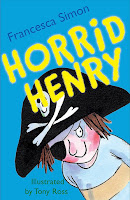UNIT 6 - BLENDED LEARNING AND FLIPPED CLASSROOMS
Blended learning and flipped classrooms are innovative practices that represent an alternative to the traditional classroom structure.
1. BLENDED LEARNING
The term blended learning is generally applied to the practice of using both online and in-person learning experiences when teaching students. In a blended-learning course, for example, students might attend a class taught by a teacher in a traditional classroom setting, while also independently completing online components of the course outside of the classroom.
In this case, in-class time may be either replaced or supplemented by online learning experiences, and students would learn about the same topics online as they do in class—i.e., the online and in-person learning experiences would parallel and complement one another.
2. FLIPPED CLASSROOM
In a flipped classroom, students are introduced to the new theoretical material outside the classroom, as homework, and that way the class time can be dedicated to practical and meaningful activities.
Like any other method, it has benefits but also some disadvantages:
The main difference between the approaches is that in blended learning the focus is on the technology (online + face-to-face), while flipped classroom means having the contact with contents at home but without the obligation to use technology, they can use books or any other available resources.
Let’s see a real example of a flipped classroom dynamic…
THE ROMAN EMPIRE
This activity is aimed at 4th Grade of Primary (aged 10), with an expected level of A1/A2. It will be part of the History subject, particularly the lesson related to the Ancient Era. The structure of flipped classroom will be implemented, with initial work at home and then practical lessons in class.
OBJECTIVES
- Identify the key ideas about the Roman Empire.
- Apply the knowledge to create the products (word wall, key ideas, route) assigned to their groups.
- Develop autonomy to work outside the classroom.
- Get involved in cooperative learning.
CONTENTS
- The Roman Empire: general timeline and functioning.
- The romanisation of the Iberian Peninsula.
- Roman sites in Spain.
TIMING
- 1 session at home
- 2 session in class: 1 for group work and 1 for presentation
ACTIVITIES
- AT HOME: the first session will take place at home. To have an introduction to the topic, the students will read the pages of the History book related to the Roman Empire. To have visual aid and summarise the topic, they will also watch THIS video. After they have all the information, they will write a key quote that summarises the Roman Empire for them.
- SESSION 1 IN CLASS: the students will be divided in groups of three, and at first they will discuss their key quotes: what aspects of the era they decided to focus on, what other things struck them… Then, using the structure of jigsaw learning, the groups of 3 will be distributed in “expert” groups. This will allow us to assign them different tasks depending on their needs and level (differentiated learning):
- GROUP 1 (modified task): debate and choose they key WORDS to design and create a word wall.
- GROUP 2 (core task): debate and choose the key IDEAS to write sentences.
- GROUP 3 (extended task): choose the key Roman sites in Spain to create a route and mark them in a map.
- SESSION 2 IN CLASS: instead of following the full structure of jigsaw learning (after the last session the experts should go back to their home groups and explain their findings), we will hold a fair. The three expert groups will each have a stand: some people of the groups stay and explain their product and why they chose that information, while others visit other stations. Then the roles switch so everyone explains and hears others’ work.
- In the end, the three products are stuck on a long paper so the project is whole.
ASSESSMENT: during the sessions, the teacher will walk around the class and OBSERVE the work in groups with a checklist/rubric that will include items related to content, attitudes, participation, etc. The final product will be assessed for the whole group, but the teacher will also have individual behaviour assessment for each student.








Comentarios
Publicar un comentario